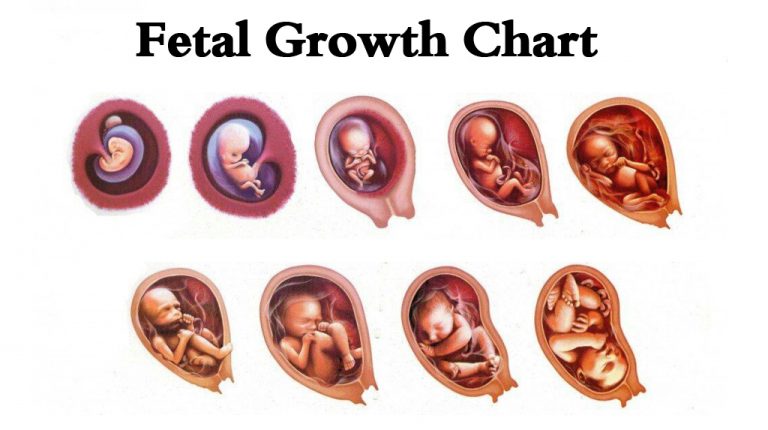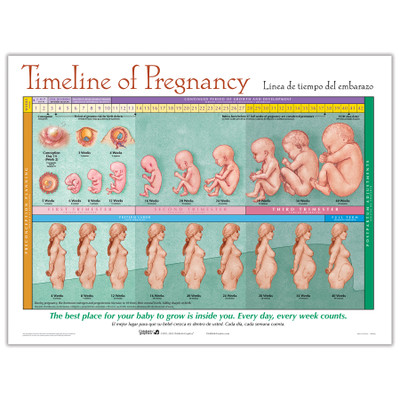Your Baby's Incredible Journey: A Week-by-Week Pregnancy Growth Guide
Pregnancy is an exciting time, filled with anticipation and countless milestones. From the moment of conception to the day you hold your little one in your arms, your baby is undergoing an astonishing transformation, growing and developing at a rapid pace. Every parent-to-be is naturally excited about fetal growth, eager to understand the incredible journey unfolding within. Understanding your baby's growth and development week by week can provide invaluable insights and help you connect with your little one even before they're born.
This comprehensive guide breaks down fetal growth through each trimester, helping you understand the amazing changes happening inside you. We'll walk you through what you can expect to happen week-by-week during pregnancy, including how big your baby is each week, common early pregnancy symptoms you might experience, and the fascinating development of their senses and organs. So, let's embark on this wonderful adventure and follow your baby's development week by week, from conception to labor.
The First Trimester: The Foundation of Life (Weeks 1-13)
The first trimester is a period of intense development, where the very foundations of your baby's body are laid. While it might seem like a long time, the changes are truly miraculous.
Weeks 1-2: The Conception Story
- Week 1: The Pre-Pregnancy Week. As exciting as this sounds, the reality of being 1 week pregnant isn't all that wonderful – because you're not actually pregnant yet! This week typically marks the start of your last menstrual period. Your body is preparing for ovulation.
- Week 2: The Spark of Life. This is when the magic usually happens. At the start of this week, you ovulate. Your egg is fertilized 12 to 24 hours later if a sperm penetrates it. Conception (also called fertilization) usually happens about 2 weeks after the start of your last menstrual period. It's still not time to get too excited about your pregnancy just yet, as implantation is still to come, but the journey has officially begun!
Weeks 3-4: Implantation and Early Cell Division
- Week 3: The Zygote's Journey. The fertilized egg, now called a zygote, begins a rapid journey of cell division as it travels down the fallopian tube towards your uterus.
- Week 4: The Blastocyst Arrives. By week 4, the ball of cells, now a blastocyst, implants itself into the uterine lining. This is the official start of your pregnancy! Your baby is still microscopic, but the groundwork for all major organs is being laid. You might start to experience very early pregnancy symptoms like spotting or fatigue.
Weeks 5-8: Rapid Development and Organ Formation
- Week 5: Tiny Heartbeat. Your baby, now an embryo, is about the size of a sesame seed. The neural tube, which will become the brain and spinal cord, begins to form, and a tiny heart starts to beat.
- Week 6: Facial Features Emerge. Your baby is growing rapidly, resembling a lentil. Primitive facial features like eyes and ears begin to develop, and limb buds for arms and legs appear.
- Week 7: Limbs and Brain Growth. Now the size of a blueberry, your baby's arms and legs are lengthening, and the brain is developing quickly, forming distinct sections.
- Week 8: Fingers and Toes. Your baby is about the size of a kidney bean. Fingers and toes are forming, though they are still webbed. Internal organs like the kidneys, lungs, and stomach are developing.
Weeks 9-13: From Embryo to Fetus
- Week 9: Becoming a Fetus. At this point, your baby officially transitions from an embryo to a fetus. They are about the size of a grape. All major organs are in place, though they are still developing.
- Week 10: Fully Formed Limbs. Your baby is now the size of a prune. Fingers and toes are fully separated, and nails are beginning to grow. They can now swallow and kick!
- Week 11: Reflexes and Movements. About the size of a fig, your baby is moving more vigorously, though you won't feel it yet. Reflexes like yawning and stretching are developing.
- Week 12: Genital Development. Your baby is the size of a lime. Genitals are forming, though it might still be too early to determine sex via ultrasound. The kidneys are producing urine.
- Week 13: End of the First Trimester. Your baby is now the size of a pea pod. All major organs are formed and maturing. The risk of miscarriage significantly decreases. Many common early pregnancy symptoms you might have experienced, such as nausea, may start to subside.
The Second Trimester: The Golden Period (Weeks 14-27)
Often called the "golden period" of pregnancy, the second trimester brings renewed energy for many expectant mothers and a period of rapid growth and refinement for the baby. This is when you might start to feel your baby's movements for the first time.
Weeks 14-17: Rapid Growth and First Movements
- Week 14: Growing Fast. Your baby is now the size of a lemon. Their body is growing faster than their head, and fine hair (lanugo) might begin to cover their skin.
- Week 15: Hearing Sounds. Your baby is about the size of an apple. Their bones are hardening, and they can start to hear muffled sounds from outside the womb.
- Week 16: Feeling the Flutters. Now the size of an avocado, your baby's movements are becoming stronger. You might start to feel those exciting first flutters, known as "quickening."
- Week 17: Developing Fat. Your baby is about the size of a turnip. They are starting to accumulate fat under their skin, which will help regulate body temperature after birth.
Weeks 18-22: Sensory Development and Activity
- Week 18: Gender Reveal Possible. Your baby is the size of a bell pepper. If you choose to find out, an ultrasound around this time might reveal your baby's sex. Their ears are more developed, and they can hear your voice.
- Week 19: Protective Coating. Your baby is about the size of a mango. Their skin is covered in vernix caseosa, a waxy, protective coating.
- Week 20: Halfway Mark! Congratulations, you're halfway there! Your baby is the size of a small cantaloupe. They are very active, and you'll likely feel more consistent movements.
- Week 21: Digestive System Maturing. Your baby is the size of a large carrot. Their digestive system is maturing, and they are swallowing amniotic fluid.
- Week 22: Tiny Fingerprints. Your baby is about the size of a spaghetti squash. Tiny fingerprints and footprints are forming, unique to your little one.
Weeks 23-27: Viability and Lung Development
- Week 23: Practicing Breathing. Your baby is the size of a large grapefruit. Their lungs are developing rapidly, and they are practicing breathing movements. This is often considered the age of viability, though survival outside the womb is still challenging.
- Week 24: Growing Lungs. Your baby is about the size of an ear of corn. Their lungs are continuing to develop, and they are gaining more weight.
- Week 25: Responding to Sounds. Your baby is the size of a rutabaga. They are becoming more responsive to sounds and might jump at loud noises.
- Week 26: Opening Eyes. Your baby is about the size of a head of lettuce. Their eyelids, which have been fused shut, may begin to open, allowing them to see light and shadows.
- Week 27: End of the Second Trimester. Your baby is the size of a cauliflower. Their brain is developing rapidly, and they are starting to develop sleep-wake cycles.
The Third Trimester: The Final Stretch (Weeks 28-40+)
The third trimester is all about growth, maturation, and preparing for birth. Your baby will gain most of their weight during these final weeks, and their organs will reach full functionality.
Weeks 28-32: Maturation and Weight Gain
- Week 28: Fat Accumulation. Your baby is the size of an eggplant. They are starting to put on significant layers of fat, making them look less wrinkly.
- Week 29: Strong Kicks. Your baby is about the size of a butternut squash. Their kicks and punches are getting stronger, and you'll feel them regularly.
- Week 30: Hair and Nails. Your baby is the size of a cabbage. Hair is growing thicker, and nails are fully formed.
- Week 31: Developing Senses. Your baby is about the size of a coconut. Their senses are highly developed; they can see, hear, and even taste the amniotic fluid.
- Week 32: Practice Breaths. Your baby is the size of a jicama. Their lungs are nearly mature, and they are taking practice breaths.
Weeks 33-36: Getting Ready for Birth
- Week 33: Head Down. Your baby is about the size of a pineapple. Many babies will start to turn head-down in preparation for birth.
- Week 34: Losing Lanugo. Your baby is the size of a cantaloupe (large). The lanugo that covered their body is starting to shed, though some might remain at birth.
- Week 35: Crowded Womb. Your baby is about the size of a honeydew melon. There's less room to move, so you might feel more wiggles and stretches than distinct kicks.
- Week 36: Full-Term Soon. Your baby is the size of a romaine lettuce. They are gaining about an ounce a day, plumping up for birth.
Weeks 37-40+: Full Term and Arrival
- Week 37: Early Term. Your baby is considered "early term" from this week onwards. They are about the size of a winter melon. Their organs are ready for life outside the womb.
- Week 38: Ready for the World. Your baby is about the size of a pumpkin. They are shedding most of their vernix caseosa and lanugo.
- Week 39: Full Term. Your baby is officially "full term." They are typically weighing between 6-9 pounds and are ready for their grand entrance.
- Week 40+: Arrival Day. Your baby is here, or very nearly! Your due date is just an estimate, and many babies arrive a little earlier or later.
Every week of pregnancy brings amazing changes in your baby’s development. This comprehensive guide, along with resources like interactive pregnancy timeline tools and doctor-reviewed images, can help you track your baby's development week by week – from conception to delivery – and learn what to expect at each stage of your pregnancy. Remember, every parent-to-be is excited about fetal growth, and being aware of the fetal growth chart can help you know your baby’s estimated weight and size at different stages.
From the earliest cellular divisions to the development of unique fingerprints and the practice of breathing, your baby's journey inside the womb is nothing short of miraculous. Following this incredible progression helps you not only understand the science but also deepen your bond with the tiny human preparing to meet you. This detailed guide aims to illuminate the fascinating path of fetal development, helping you

Baby Growth Chart Week By Week - Length & Height

Pregnancy & Gynecology & Baby on Instagram: "Week by week baby

Weekly Fetal Development Chart | Childbirth Graphics